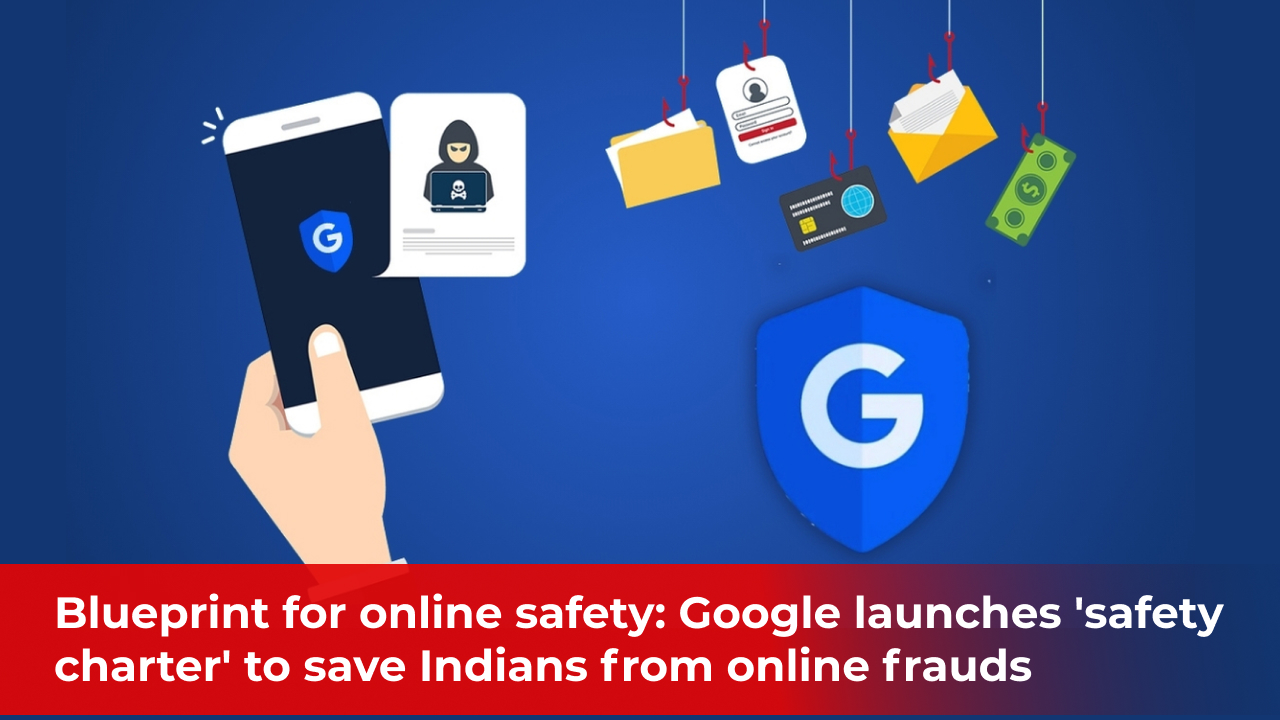A week before, Google announced a major initiative, called "Safety Charter", during the Google India Summit. Google's Safety Charter is highly focused on protecting users digitally and is built for three major things: keeping the end user safe from online fraud, boosting Cybersecurity for critical infrastructure of enterprises and government, and lastly building AI in a more responsible manner. In India, the use case of technology has been evolving and growing rapidly.
Google's VP of Security Engineering, Heather Adkins, and VP and Country Manager for India, Preeti Lobana, talked about this new initiative, where they unveiled what Google's mission is with the Safety Charter and how it will benefit the Indian Digital market. Adkins said, "As AI proliferates deeper into our digital lives, it’s crucial that we, as responsible stewards of India’s tech industry, ensure that the trust reposed by users in India's digital ecosystem remains unchanged." She added, "Towards this, we’re excited to share Google’s Safety Charter for India’s AI-led transformation."

Key Points that the Safety Charter focuses on
Google's safety charter builds trust among people so that they feel safe. Here's the blueprint for online safety with Google's Safety Charter, which consists of three themes: user safety, Cybersecurity, and responsible AI. Below, these are explained.
Keeping the end user safe from online fraud and scams
Online scams have been rising daily, and identifying them is becoming complex. As per many reports, "scammers are leveraging advanced techniques like AI-generated content, deepfake videos, and voice cloning to create highly convincing fraudulent schemes." For an overview, the scams related to UPIs in 2024 are reported to be over INR 1087 crore, and there is a higher risk for Indian entities to lose up to INR 20,000 crore in 2025 because of cybercrime. Here's Google's launch of the Digikavach program, which is used to prevent, detect, and respond to these fraudulent practices that could potentially harm users.
DigiKavach - Reducing financial fraud in the Indian ecosystem.
It has been building awareness about common frauds and scams in India. Google has officially partnered with the Indian Cyber Crime Coordination Centre (I4C), and it is also collaborating with the Ministry of Home Affairs to make efforts in a phased approach.
- In 2024, Google blocked 246 million+ ads and more than 2.8 million accounts for violating its policies.
- Using AI and ML, Google can filter out harmful and suspicious pages with 20 times more accuracy.
- Keep users safe from 500 million+ suspicious messages monthly through Google's AI-powered Scam Detection.
- Safeguard Indian users by displaying warnings before making transactions. Over four crore warnings have been displayed.
Advancing Cybersecurity for public users and enterprise infrastructure
The main idea is to protect people, businesses, and governments by helping them with Google's Expertise. Adkins said bad actors are also using Gen AI for greater productivity, language translation, and research, and it is genuinely very concerning for the company, as the technology is making cyber attacks easier.
- The Google Cloud M-Trends report provides stats and insights about cybersecurity trends and incidences that occurred in the past.
- Google's Project Zero team discovered an unknown exploitable vulnerability in SQLite.
- Providing US$5 million in aid to strengthen local MSMEs and students' cybersecurity capabilities.
Building AI Responsibly
AI is becoming more capable, so there is a need to build advanced defenses that support content policies and provide tools for easy data evaluation. Building AI responsibly is a must.
- Assessing and tuning language models for increasing their accuracy across 29 Indic languages.
- Investing tools that help identify AI-generated content. Asking Creators to expose AI-generated content on YouTube.
- Testing out the AI models and infrastructure rigorously to reduce risks.
- Creating cloud-based solutions embedding responsible AI principles.
Safety is a shared responsibility
Think for a second about the vast digital ecosystem, and being safe digitally demands that the entire ecosystem evolve and become more resilient. Google seeks collaborations and exchanging information to achieve maximum safety since it believes that safety is a shared responsibility. Cooperation with law enforcement, banks, civil society groups, and the government is required.
Adkins shared, "We also work closely with government bodies like the Department of Telecom, the Ministry of Home Affairs, and the Securities and Exchange Board of India, understanding that this requires a whole-of-society approach." by following her statement, "Consortiums like the Global Signals Exchange, a global clearinghouse for bad actor signals and Partnering for Protection which streamlines scam reporting from financial institutions globally are examples of centralized intel sharing with an intention of strengthening the entire web."
Google opened the Google Safety Engineering Centre (GSEC) India in Hyderabad on June 18, 2025. It was inaugurated by Telangana Chief Minister Shri Anumula Revanth Reddy and IT Minister Shri D. Sridhar Babu. This is Google's first facility in the Asia-Pacific region. With GSEC India, Google aims to build a secure and resilient digital foundation for India's AI-enabled future and also act as a lighthouse for global security efforts.
